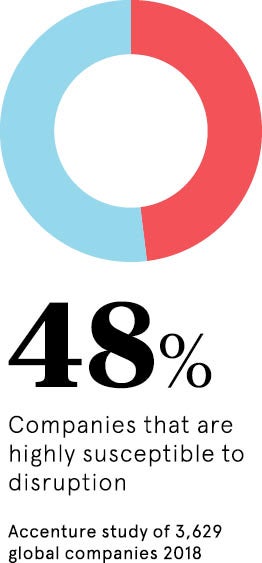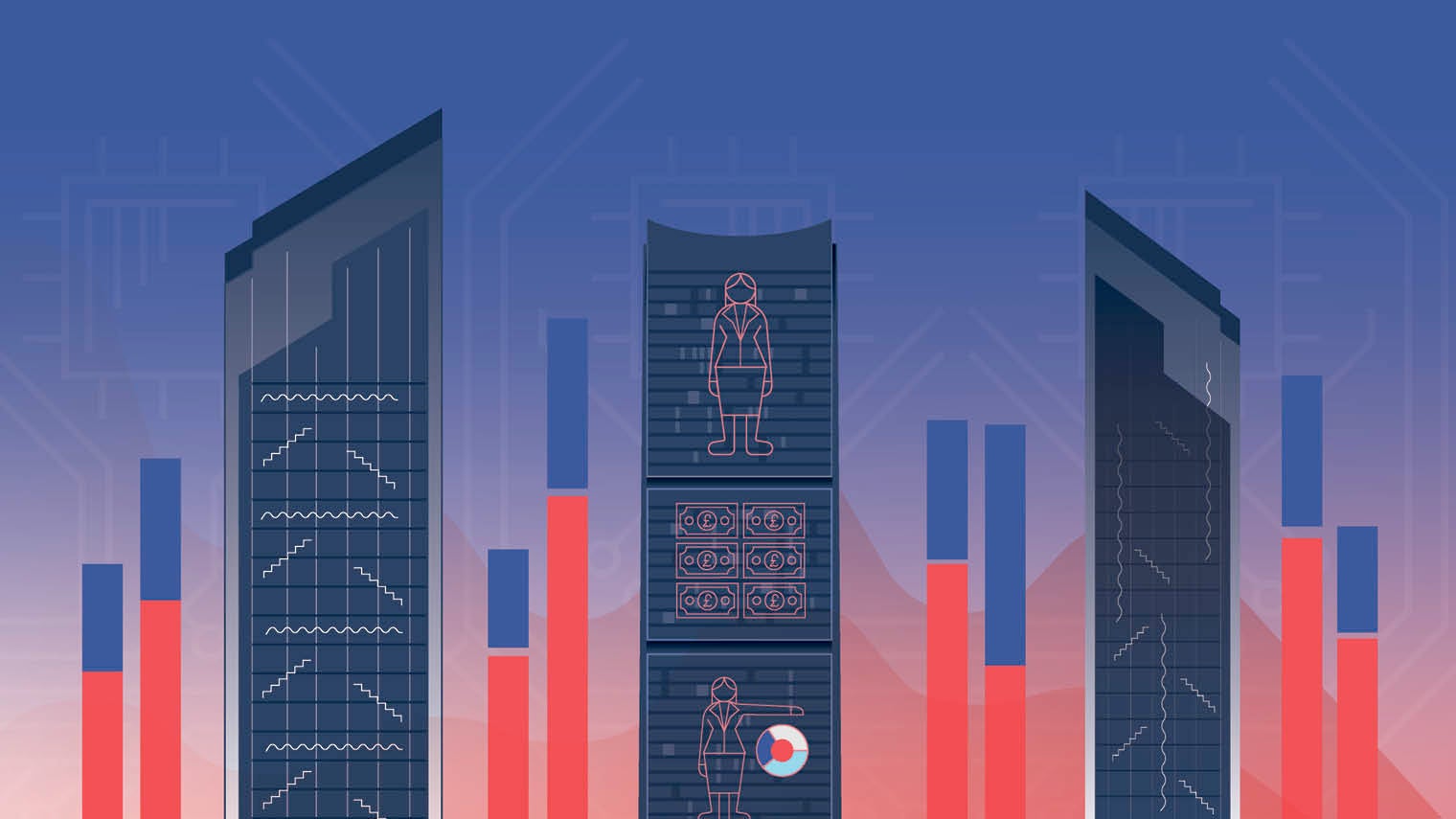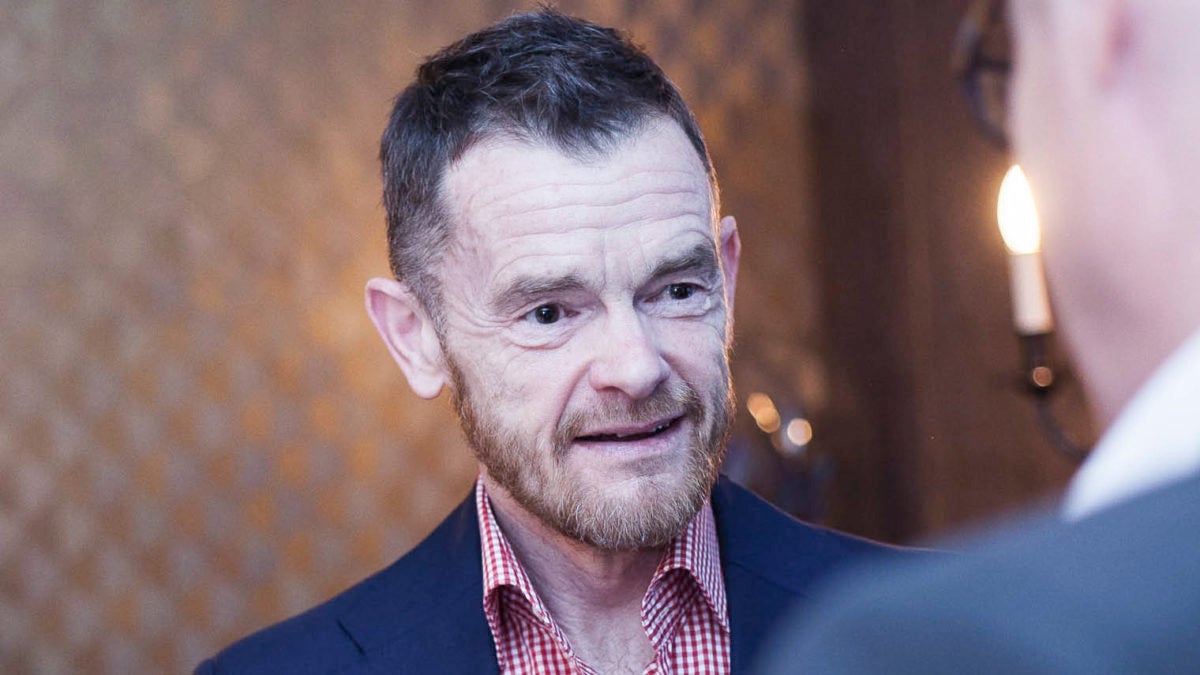Digital disruption has broken out of Silicon Valley. Any company, no matter how nuts-and-bolts, can be disrupted by a digital competitor; equally, any company could be that digital disruptor.
With the threats and opportunities ever greater, CDW organised an executive roundtable in London in May with the theme “Embrace disruption. Embrace transformation”. The discussion was kick-started by two leading industry thinkers: Andrew Moore, chief transformation officer of chipmaking giant Intel, and Nigel Moulton, chief technology officer at Dell EMC, part of a corporation that services 99% of the Fortune 500 companies.
The starting point for digital disruption is top-level leadership
Their remarks sparked lively discussion. Both Intel’s Mr Moore and Dell EMC’s Mr Moulton spend a lot of time talking to leading companies about their digital transformation journey, and they kicked off with a tough message: it’s hard work.
“If this stuff was easy we would all have done it a long time ago,” noted Intel’s Mr Moore. Nevertheless, it became clear that there are ways to navigate through the minefield. Some emerged in the roundtable; others are explained elsewhere in this digital report.

What’s not in debate, however, is that the starting point for digital disruption is top-level leadership. After that, the real hard work begins. “The people challenge is the biggest problem,” said Mr Moulton. “How do you embed a digital culture in an organisation whose culture fights against change, particularly change this radical?”
One traditional solution – buying the new competitor and trying to assimilate it – does not work, he said (see “The fallacy of the digital buy-in”). What’s left is much harder, change that comes from within.
Yet without engaging the broad workforce, a strategy is doomed to fail. Intel, which has more than 100,000 employees, holds quarterly innovation days where employees can report the digital threats and opportunities they see in the distance.
Make them believe they are part of the solution versus feeling like mice on a wheel
Mr Moore said: “It used to be that leadership felt their role was define the strategy and tell the people. That philosophy has changed from define and tell to align and agree.” Implicit in that statement is the importance of enlisting and engaging the employees from the outset. “Tap into the sensor network at the edge. The employees want to lean in and help. Make them believe they are part of the solution versus feeling like mice on a wheel.”
One factor that helps catalyse change is a chief transformation officer, a job title that has become increasingly common in recent years (see “Chief transformation officer: revolutionary or functionary?” later in this report). Some see this as a slightly exalted name for a project manager, however, at its best, this person can be much more. Mr Moore, who runs Intel’s CTO office, said one function is to “change the metabolic rate of the organisation”, and this is only possible if the function has strong backing from the chief executive.
He added: “Your ability to get stuff done can’t be down to your powers of persuasion or your interpersonal skills, however good they may be.”
But that transformation office can only work with the raw material on hand – the skills of the workforce. Some of the participants expressed concerns over this. Increasingly, the brightest graduates prefer to start their own firm or join a young, fast-growing company. If those options don’t work, then a tech giant such as Google or Amazon would be the next choice. A managerial post with a large company is seen as a last-choice option.
And even if you can persuade talent to apply, what talent do you hire? In 2017, Dell in conjunction with Institute for the Future published a report saying that 85 per cent of the jobs that will exist in 2030 have yet to be invented. In just 12 years those super-skilled millennials that are being hired today may be of no value – implying a huge commitment to training.
In just 12 years those super-skilled millennials that are being hired today may be of no value – implying a huge commitment to training
And an organisation will need more than human skills. Intel’s Mr Moore made perhaps the boldest statement of the evening by saying that organisations need to think about non-biological skills too.
“‘When I say those words out loud people say I have lost the plot. But the workforce and the skills of the future will be a mix. There’s going to be people like us. But we are going to be intermingling and collaborating with digital skills.”
Lou Lwin, group head of enterprise architecture at Markerstudy, a privately owned group that owns a wide portfolio of insurance businesses, explained how his firm had introduced machine learning into a department that fixed renewal prices, a key part of customer retention.
“Initially people were scared because they were worried that implementing new technology might meaning losing the personal touch.” But the technology was presented as a way of augmenting traditional skills rather than replacing them. “Now they’re taking it on and they can’t get enough of it,” he said.
Is the IT department ready for this kind of change? David Chapman, CDW UK’s vice-president of sales, said many were struggling to assess their options. “Part of the game at the moment is figuring out what technologies do I invest my time in.”

Despite tight budgets, technology choices are proliferating. Should they invest in bedrock technologies such a hybrid cloud? Business enablers such as blockchain? Or fancy user interface skills such as Alexa Voice?
One participant said the IT department was being asked to be both thought leaders and in-house PC-fixers. Markerstudy’s Mr Lwin said his firm had rebranded the IT function as if it was an external agency and worked to reduce the demands of everyday maintenance to pay for high-visibility projects in big data and machine learning (see his article “Transformation: it’s all about competence” later in this report).
Ray Kurzweil, Google’s director of engineering, has predicted that AI will achieve human levels of intelligence by 2045 when we reach a point known in the industry as “the singularity”. As AI continues to evolve, its importance to decision making and diagnosis will increase, as it augments (rather than replaces) human capability. Could AI itself soon be helping plan the enterprise’s digital transformation?
Many executives attending thought it could – particularly if the definition of an enterprise changes. Today we think of an enterprise as a collection of staff owned by a shareholder that (hopefully) generates a profit. But the advent of blockchain will enable the creation of autonomous algorithms that operate like digital mini-companies, trading and transforming digital assets, and remitting cryptocurrency dividends to their creators until the profit opportunity has gone – which may be years or minutes.
Some commentators have predicted that hundreds of millions of knowledge workers will find their jobs disappear but Dell EMC’s Mr Moulton reckons that while digital disruption may kill off many companies, Human Beings plc will be a survivor.
“If you were making shoes for horses at the end of the 19th century you might not think this was a good place to be. But if you got into the tyremaking business, or the roadmaking business, you might think that’s a good place to be. I think there’s a natural evolution in us as a species that allows us to make these changes.”

Change that’s more than skin deep
Look at your core skills – and see how they can be used in new ways.
That was the advice of Andrew Moore of Intel for any business facing disruption – and the example he chose was an unusual one: Fujifilm.
The firm was making a successful transition to becoming a producer of digital cameras but realised this move was happening faster than expected – and one-off sales of digital cameras were not enough to make up for the loss in recurring film sales.
Fujifilm examined its core skills, and looked at antioxidant technology it had developed to prevent photographs being damaged by ultraviolet light. In 2007 it launched its Astalift cosmetics range that uses the same technology to protect skin from the harmful effects of the sun.
The cosmetics business is now part of the division of Fujifilm with the largest revenue growth.

Andrew Moore, chief transformation officer at Intel
Shigetaka Komori, Fujifilm’s chairman and chief executive, told the Singapore Straits Times in 2017: “You have to be brave to carry out changes. You shouldn’t be scared by problems, and you shouldn’t fear danger.”
“As you look at changing, you start by understanding what you’re good at, what your core skills are,” said Mr Moore. “Don’t lose sight of what made you successful, but think about those core skills and see if they can be applied slightly differently.”
In Fujifilm’s case, the move into cosmetics certainly didn’t lose sight of what made it successful – it has leveraged its brand and other technology skills to remain a leading manufacturer of consumer digital cameras as well as retaining a strong industrial imaging business.
For help solving complexity with people who get IT, visit www.uk.cdw.com



